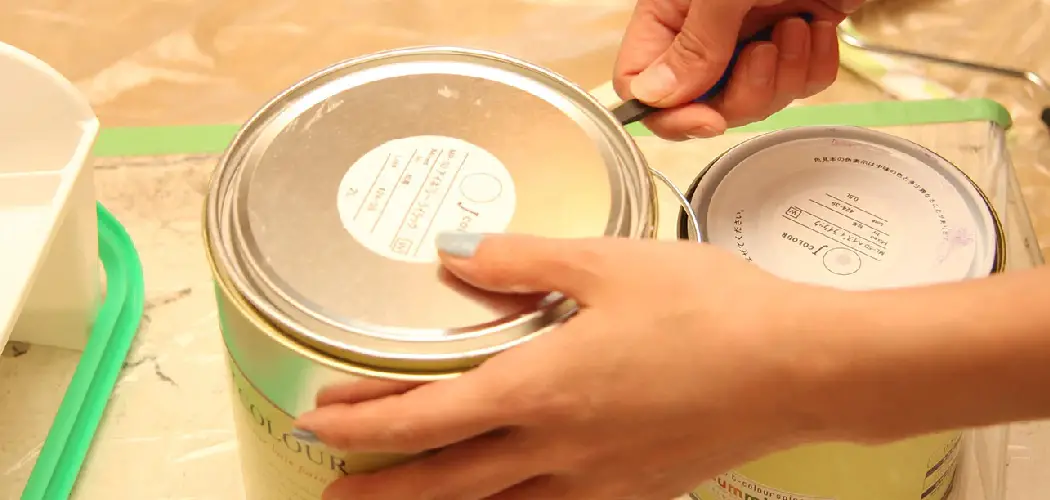Painting patio furniture with vinyl straps is a great way to refresh its appearance and extend its life. Over time, exposure to sun, rain, and regular wear can cause fading or discoloration, making furniture look outdated.
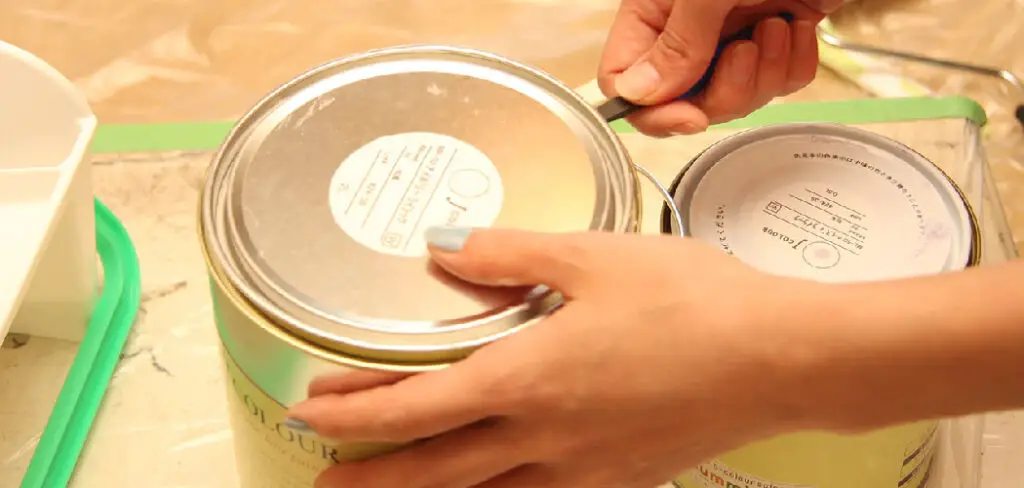
With a few simple tools, the right paint, and careful preparation, you can transform your outdoor furniture into stylish, like-new pieces. This guide will walk you through the step-by-step process of how to paint patio furniture with vinyl straps.
Challenges of Painting Vinyl Straps
Painting vinyl straps can come with a few challenges that require careful attention to achieve the best results. One of the primary difficulties is ensuring proper adhesion of the paint to the surface, as vinyl straps are smooth and non-porous, making it harder for standard paints to stick. Additionally, environmental exposure, such as UV rays and weather fluctuations, can cause the paint to peel or fade over time if the wrong type of paint or insufficient preparation is used.
Another challenge is evenly covering the flexible surfaces without leaving brush marks, drips, or uneven textures. Finally, working around the curved and tight areas of straps can be tricky, requiring patience and precision to maintain a uniform, professional look. Addressing these challenges with the right techniques and materials is the key to ensuring a durable and attractive finish.
Supplies You’ll Need
To achieve the best results when painting, it’s important to gather the right supplies beforehand. Here’s a list of items you’ll need:
- High-quality paint suited for the material you’re working on—ensure it’s durable and flexible if painting on surfaces like straps.
- Primer to help the paint adhere better and provide a more even finish.
- Paintbrushes in varying sizes, including fine detail brushes for tight or curved areas.
- Painter’s tape for masking off sections and creating clean edges.
- Sandpaper or a sanding block to smooth out uneven areas and improve surface preparation.
- Drop cloths or newspapers to protect your workspace from drips or spills.
- Clean cloths or rags for wiping down surfaces before and during painting.
- A sealant or protective topcoat to ensure long-lasting durability and resistance to wear.
Having these supplies ready will streamline the painting process and help you achieve a professional-looking finish with ease.
10 Methods How to Paint Patio Furniture with Vinyl Straps
1. Assess the Condition of the Furniture Before Starting
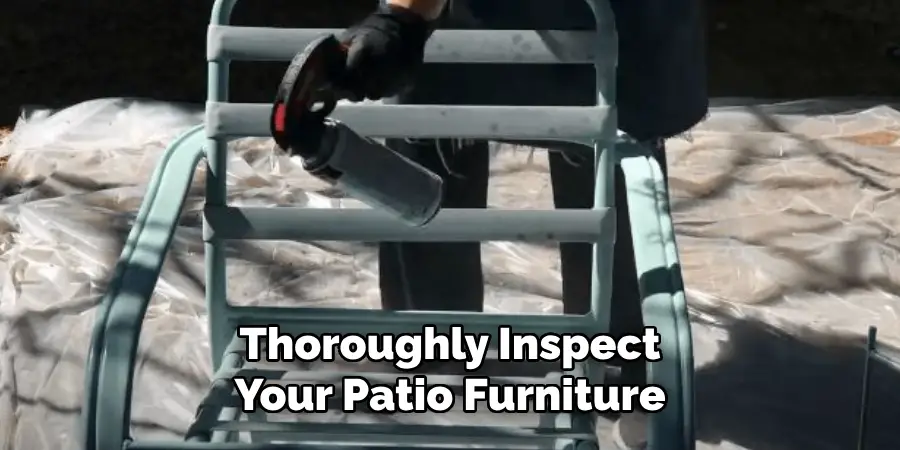
Before picking up a paintbrush or spray can, take time to thoroughly inspect your patio furniture. Check the vinyl straps for flexibility, cracks, brittleness, or signs of mold. If the straps are too damaged or brittle, painting may be a temporary fix at best—replacement may be the better route.
However, if the straps are still strong and only faded, discolored, or uneven in tone, painting them can provide a refreshing update. Assessing the frame is equally important; if the metal or plastic base has rust, flaking paint, or corrosion, it should be addressed before any paint touches the surface.
2. Choose the Right Paint for Vinyl Surfaces
Vinyl is a non-porous material, which means not all paint types will adhere properly. Ordinary latex or acrylic paints will likely peel or flake over time. For long-lasting results, select a paint specifically designed for plastic or vinyl surfaces.
Spray paints labeled for “plastic use” or “vinyl coating” work best, as they bond chemically with the surface. Brands like Krylon Fusion or Rust-Oleum for plastic are popular and widely available. Also, look for paints that offer UV resistance and flexibility—important features since vinyl expands and contracts in outdoor conditions.
3. Clean the Furniture Thoroughly Before Painting
Proper surface preparation is essential for good paint adhesion. Begin by washing the entire piece of furniture, especially the vinyl straps, with a mild soap and warm water solution. Use a soft sponge or cloth to scrub away dirt, oils, sunscreen residue, mildew, or any other contaminants that might interfere with paint bonding.
For stubborn grime or mildew, you can add a splash of white vinegar or use a degreasing cleaner. Once clean, rinse thoroughly with water and allow the furniture to dry completely. This may take several hours, depending on humidity.
4. Lightly Sand or Scuff the Vinyl for Better Adhesion
After cleaning and drying, the next step is to lightly scuff the surface of the vinyl straps to help the paint stick. Use fine-grit sandpaper (around 220-grit) or a synthetic scouring pad to gently roughen the vinyl.
You’re not trying to remove material—just dull the surface enough so the paint has something to grip. Be careful not to over-sand, as vinyl is thin and can be weakened by aggressive abrasion. Once you’ve scuffed all the straps, wipe them down with a damp cloth to remove any sanding dust before painting.
5. Protect the Frame and Other Areas with Painter’s Tape and Plastic
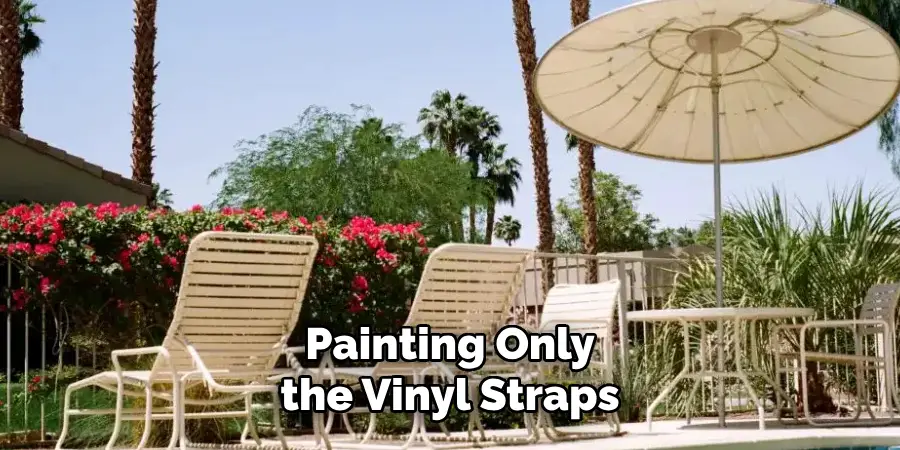
When painting only the vinyl straps and not the frame, take care to protect the surrounding surfaces. Use painter’s tape to mask off the edges where the straps meet the frame, and cover the frame itself with plastic sheeting or a drop cloth. If the furniture has areas where the straps weave through the frame, take your time taping these junctions precisely.
Well-placed masking will ensure clean lines and prevent unwanted overspray. Conversely, if you’re painting both the frame and the straps, you can tackle the frame first and tape it off once it’s dry.
6. Use Even, Controlled Strokes with Spray Paint
When it’s time to paint, shake the can of spray paint thoroughly to ensure an even mixture. Hold the can about 6 to 10 inches from the vinyl surface and use steady, sweeping motions.
Start each pass slightly before the strap begins and finish slightly after it ends to avoid concentrated buildup in one spot. Apply thin coats rather than one thick layer, allowing each coat to dry according to the product instructions—typically 10 to 30 minutes. Multiple light coats will result in a smoother finish and better durability without dripping or sagging.
7. Allow Ample Drying and Curing Time Between Coats
Once your first coat is on, patience is key. Allow the paint to dry fully before applying the next coat, especially if you’re painting in high humidity or cooler temperatures.
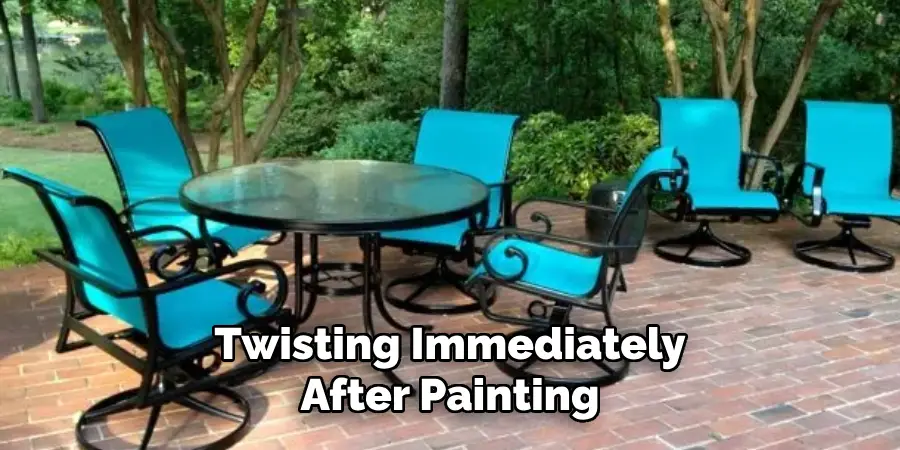
Rushing this process can lead to tacky or uneven finishes, and the paint may not adhere properly. After the final coat, allow at least 24 to 48 hours of curing time before handling or sitting on the furniture. This ensures that the paint fully bonds to the vinyl and hardens enough to withstand movement and pressure.
8. Apply a Clear Protective Topcoat for Extra Durability
To increase the longevity of your newly painted vinyl straps, consider applying a clear topcoat. Look for a UV-resistant clear spray designed for plastics or outdoor use. A satin or matte finish can preserve the natural look of the vinyl, while a glossy coat will give a more modern, sleek appearance.
The topcoat adds another layer of protection against sun fading, moisture, scratches, and abrasion. Be sure to apply the topcoat in the same thin, even manner as your color coats, and allow it to dry completely before using the furniture.
9. Avoid Excessive Bending or Stretching After Painting
Vinyl straps are designed to flex and support weight, but excessive bending or twisting immediately after painting can cause cracking or flaking, especially if the paint hasn’t cured completely.
Try to avoid sitting on or stretching the straps for at least a few days after painting. Over time, the paint will become more flexible, but in the early stages, it’s still vulnerable to damage. If possible, place the furniture in a shaded, dry spot where it won’t be used until the finish has fully hardened.
10. Maintain Regular Cleaning and Touch-Ups to Keep It Looking New
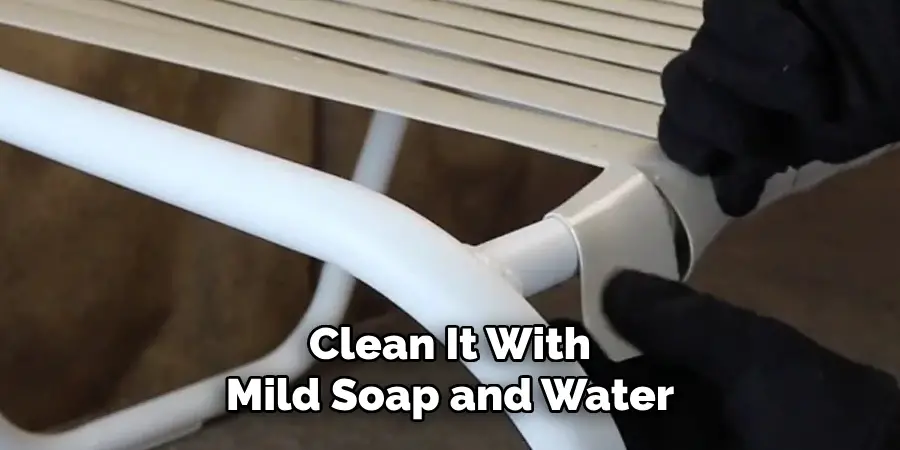
Once your painted patio furniture is back in use, regular care will keep it looking its best. Clean it with mild soap and water as needed, and avoid abrasive tools or harsh chemicals that could dull the paint. If scratches or chips occur, they can be easily touched up with leftover spray paint. Keep a spare can on hand for these quick fixes.
Annual reapplication of the clear topcoat can help protect the color and sheen from UV exposure and general wear. With a little upkeep, your freshly painted vinyl-strapped furniture will remain vibrant and functional for many seasons.
Conclusion
Painting patio furniture with vinyl straps is a budget-friendly and rewarding way to breathe new life into faded or dated outdoor pieces. By choosing the right materials, preparing the surface carefully, and applying paint with precision and patience, you can transform your furniture and extend its usefulness. With the proper protective topcoat and a routine of gentle maintenance, your revitalized furniture will continue to serve as a stylish, durable centerpiece in your outdoor space for years to come.

